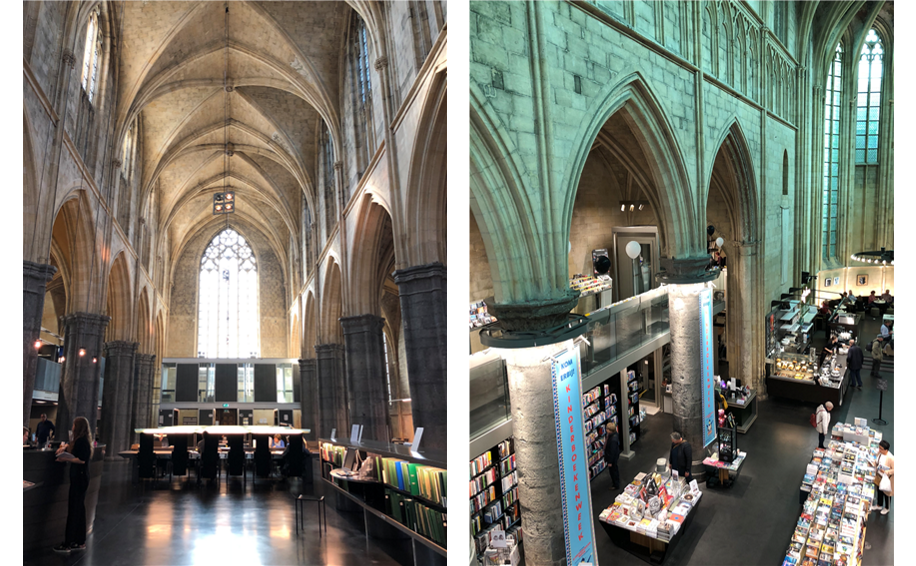The first time I drove on Route 13 in Ithaca, New York, after my mother died, I crept along at the 40 mph minimum speed limit. On the gentle descent into town on that summer’s day in 2016, Cayuga Lake lay in the west as it should. But in front of me, the road’s white lane markings jiggled, threatening to peel away. Frustrated drivers sped past at alarming speeds, but my confidence in the road was broken.
In the days following my mother’s death, words, too, jiggled on the page. They bounced up and down, keeping sentences out of reach. Had it been otherwise, I might have turned to the years of correspondence between my parents that I’d inherited. Instead, I opened my mother’s childhood photo album. The old black and white images didn’t bounce. They lay still on the page, neatly affixed with yellowing adhesive corners, waiting. They invited me into an unfamiliar time and place, a different world. The longer I studied the photographs, the more certain I became that I would one day write about them.
Inspiration for my novels had always come in different forms. A childhood memory of a red banner hanging across Mall Road in Lahore. Faded newsprint stumbled upon in the University of Denver’s library stacks. A long ago dream in Islamabad that haunts me still. But my steadiest source of writing inspiration is the trove of images imprinted in my mind’s eye. In preparation for “We Take Our Cities with Us: A Memoir,” I returned to that method and covered a wall with such imagery, as if the act of seeing was a requisite for writing.
In memoir, time can be difficult to apprehend. In mine, I strive for time to be fluid, to inhabit the page the way memories inhabit us. The flickering flashlight of the present illuminates the past that was once the future. Several of the images that guided me have a then and now. Juxtapositions like those depicted below propel the story.
1.
In Maastricht’s famous cathedral-cum-bookstore, a book falls open to a photograph. A man leans against my great grandparents’ home on the Oeverwal where just outside the frame, in a war several decades into the future, the St. Servatius Bridge will be destroyed. The date in the caption coincides with my great grandparents’ residency, and although I will never know if this is true, I pretend that my great grandfather is posing on a winter Sunday when, for once, he attends church with his wife.
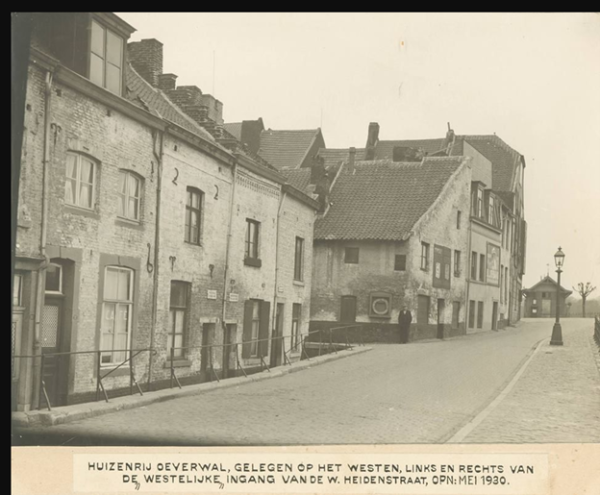
A view of my great grandparents’ house on the Oeverwal in Maastricht, May 1930. The photograph is included in Wil Lem’s “Wyck: Entree van Maastricht” (Maastricht: Uitgeverij Aprilis, 2008). The caption (translated from Dutch) reads: Row of houses along the Oeverwal, located on the west, to the left and right of the “western” entrance of W. Heidenstraat, May 1930.
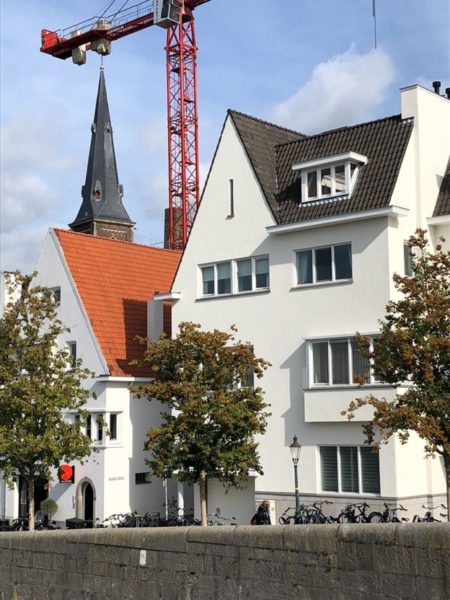
The view of my great grandparents’ house on the Oeverwal from the St. Servatius Bridge in Maastricht, October 2018.
2.
Shortly after my father dies, my mother prepares to leave Pakistan. One day, she sets fire to an effluvia of papers in our Islamabad garden, but a map of squiggles is spared. I find it in a folder after my mother’s death and do not think of it again until years later, when I rifle through documents in anticipation of a research trip to the Netherlands. The map directs me in Amsterdam’s Buitenveldert cemetery; it leads me to my great grandmother’s gravesite where now another woman’s bones are interred.
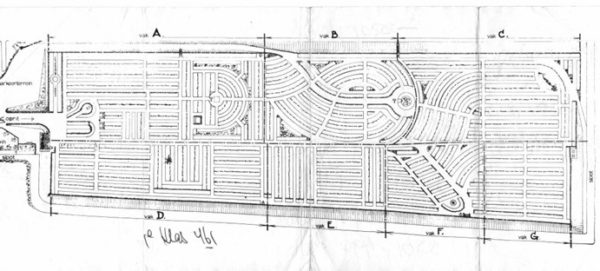
A map of Amsterdam’s Buitenveldert Cemetery (listing gravesite #461) found in my mother’s papers.
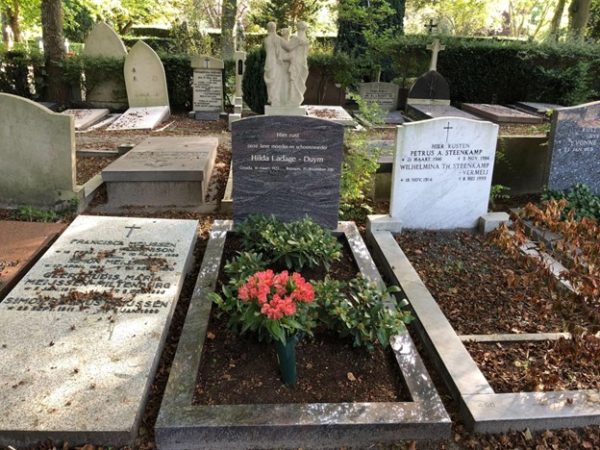
Gravesite #461 in Buitenveldert Cemetery, Amsterdam, in which my great grandmother was once buried, October 2018.
3.
In the last months of her life, my mother annotates a few pages in an old photo album, as if to help me navigate the past. She includes an Amsterdam street sign, which I will discover is her estranged father’s office address. When I visit the location, the receptionist at the now hotel explains that the building was once a brothel.
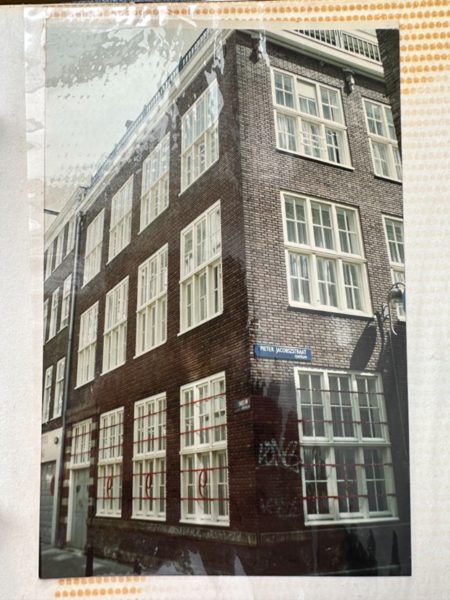
Street signs on a building at the intersection of Pieter Jacobzstraat and Nes, Amsterdam, as depicted in a photograph in my mother’s photo album, 1980s.
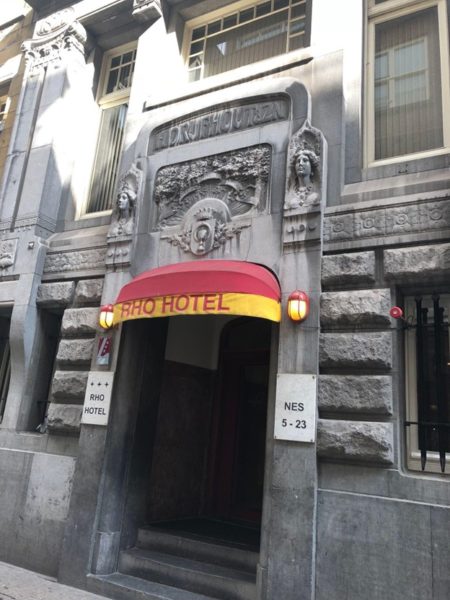
The building that once housed my grandfather’s office on Nes, a narrow street in central Amsterdam, a few steps from the intersection with Pieter Jacobzstraat, October 2018.
4.
I’ve never seen this photograph when I come upon it in an old family album. My mother and her mother stand aboard a ship on a fall day in 1952 that marks my eighteen-year-old mother’s departure from the Netherlands. Years later, the port building still sports the name of the shipping line, Holland Amerika Lun, and I eat a bowl of potato soup on the premises, which is now Hotel New York.
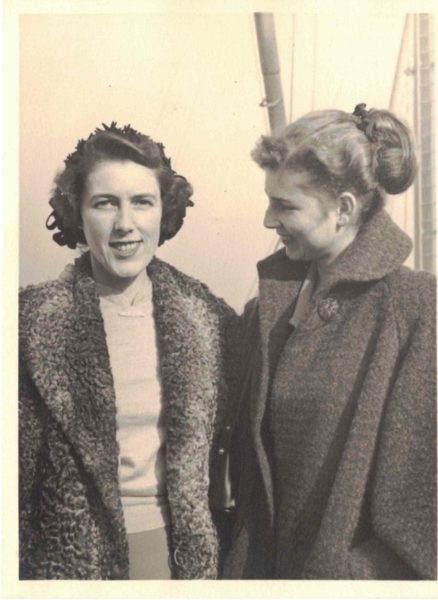
My mother and her mother before they say goodbye on board the ship that will take my mother to the United States, Port of Rotterdam, October 1952.
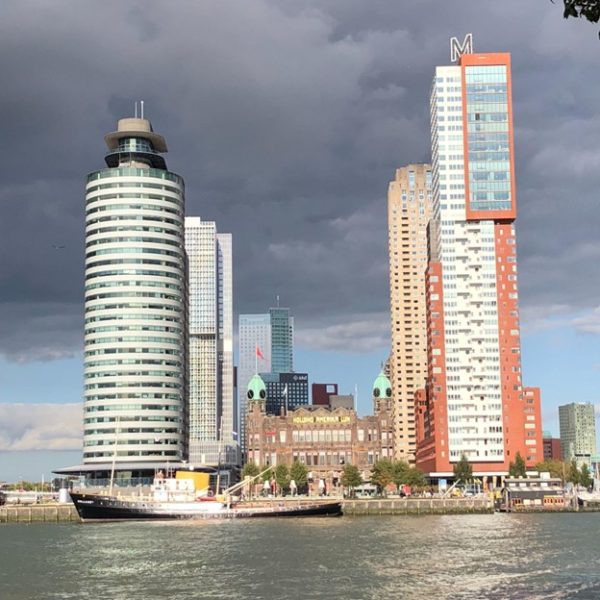
The old Holland America Line building dwarfed by recent construction, October 2018. My mother boarded her ship to the United States from this building in the Port of Rotterdam.
5.
Early on in the pandemic, a Dutch cousin I’ve recently come to know sends me photographs of the home our grandfather made with his mistress. The villa is outfitted like a museum and grand paintings decorate the walls. One painting in particular catches my attention, and months of online research leads to Hofstede de Groot Cornelis’ “Catalogue Raisonee of the Works of the Most Eminent Dutch painters of the Seventeenth Century,” where the painting by Aelbert Cuyp (1620-1691) is described as “A view of the open flat Country in Holland, exhibited under an aspect of a fine summer’s morning.”
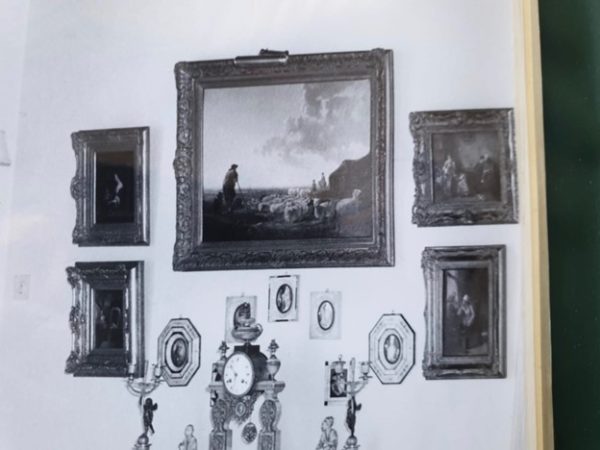
An Aelbert Cuyp painting (middle) on my grandfather’s living room wall in Laren, the Netherlands, mid-1950s.
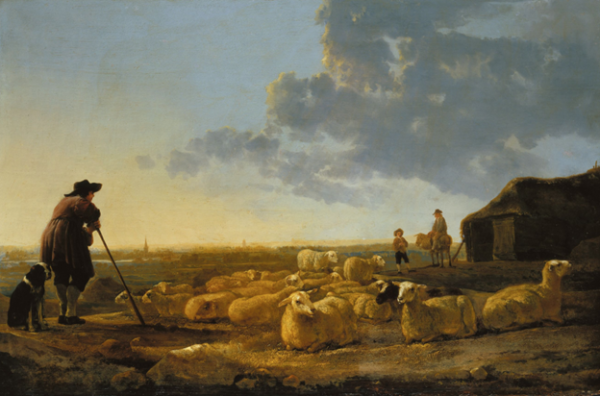
An image of Aelbert Cuyp’s painting, titled “Herder met een kudde schapen op een weide,” that I discover in the online archives of the Städel Museum, Frankfurt, Germany.
6.
When I am a young writer, already certain that the house is my subject matter, I ask my aunt to draw 5 Queen’s Road, Lahore. The ballpoint sketch of my grandparents’ home sits on my desk while I struggle with a manuscript. When I begin “We Take Our Cities with Us,” I recover my aunt’s work from a long forgotten box and return it to my desk. I imagine my mother’s arrival in Lahore and that January day in the early 1960s when my father takes a photograph on the back lawn.
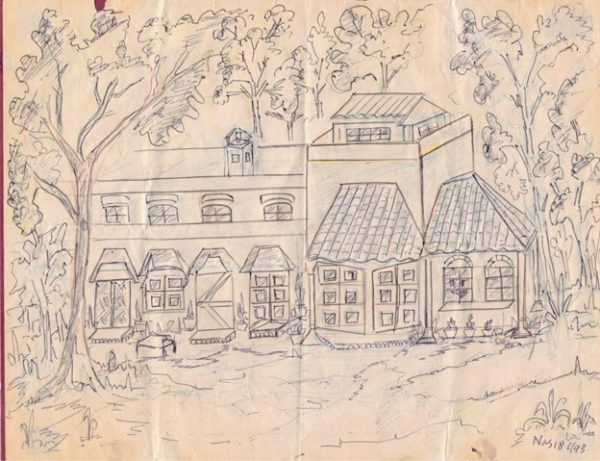
The ballpoint sketch of 5 Queen’s Road, Lahore, by my aunt, Nasreen Chaudhri, 1993. My novel “Five Queen’s Road” shares its title with the address of my grandparents’ home.
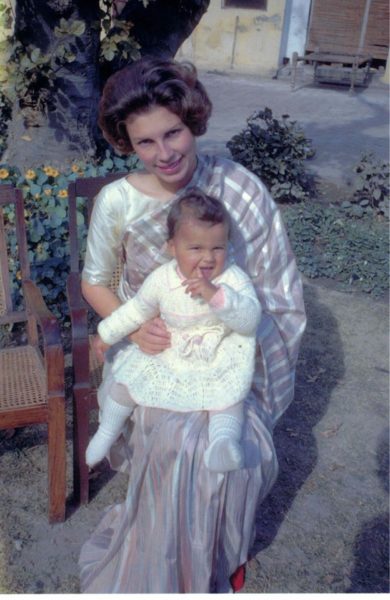
Photograph of my mother and me on the back lawn of 5 Queen’s Road, Lahore, taken by my father in January 1963.
7.
My mother buys a painting by Pakistani artist Ismail Gulgee in 1972. I grow up believing, like all my family, that the لا إله إلا ٱللَّٰهُ محمد رسول ٱللَّٰهِ sweeping downwards from right to left is a calligraphic rendering of one of Islam’s primary tenets, the shahada. When I research the painting, Gulgee’s son, also an artist, explains that it is but a gestural abstract.
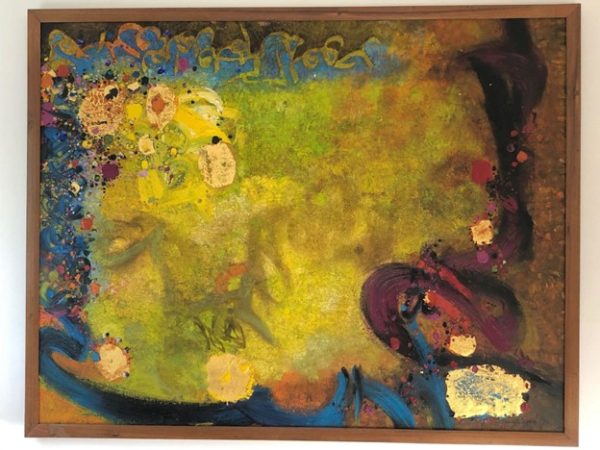
Painting by Ismael Gulgee, 1972, that now hangs on a wall in my home.
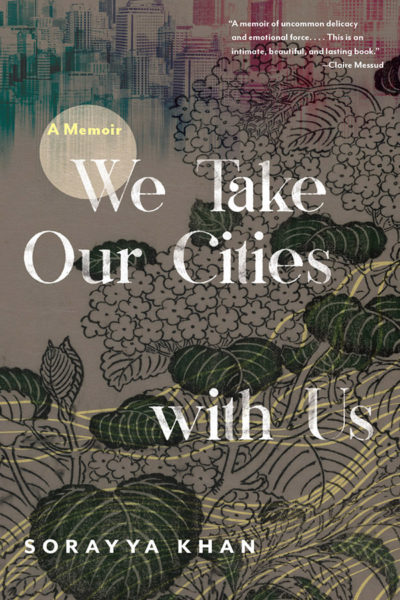
Sorayya Khan’s “We Take Our Cities with Us: A Memoir” is available from Ohio State University Press/Mad Creek.
Sorayya Khan is the author of “We Take Our Cities with Us: A Memoir” and three novels: “Noor,” “Five Queen’s Road,” and “City of Spies,” which won the Best International Fiction Book Award at the Sharjah International Book Fair. Her work appears in Lit Hub, Guernica, Longreads, Electric Lit, The Rumpus, Oldster, Journal of Narrative Politics, The Kenyon Review, and more, and her fiction is included in several anthologies. She is the winner of a Malahat Review Novella Prize and a Fulbright Scholar Award. She is the daughter of a Pakistani father and a Dutch mother, was born in Europe, grew up in Pakistan, and now lives in Ithaca, New York, with her family. Follow her on Instagram at @SorayyaKhan, or find her at www.sorayyakhan.com.
Header photos of Maastricht’s bookstore, Boekhandel Dominicanen/Maastricht’s archive, Historisch Centrum Limburg.

